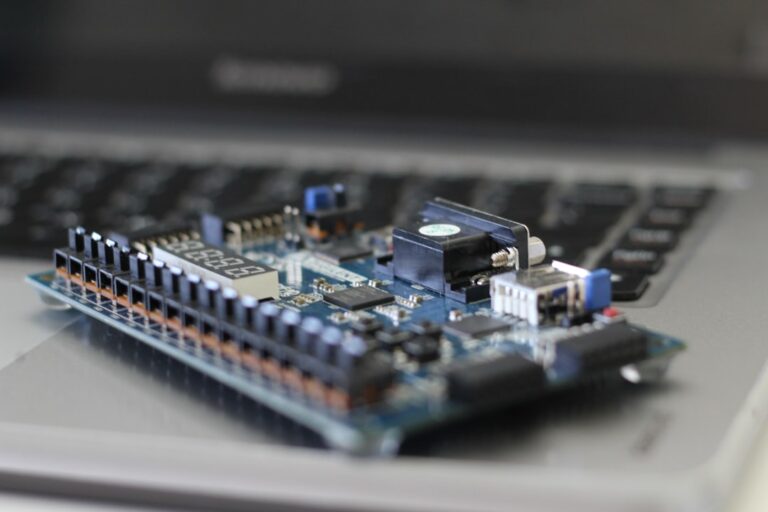Deadlock is a complex phenomenon that occurs when two or more parties find themselves in a situation where progress is impossible due to conflicting interests or positions. This impasse can manifest in various contexts, including negotiations, organizational decision-making, and interpersonal relationships. The essence of deadlock lies in the inability of the involved parties to reach a consensus or compromise, often leading to frustration and stagnation.
In many cases, the stakes are high, and the consequences of remaining in a deadlock can be detrimental, not only to the parties involved but also to broader systems and communities. The dynamics of deadlock are often influenced by psychological factors, such as ego, fear of loss, and the desire for control. When individuals or groups become entrenched in their positions, they may lose sight of the larger picture and the potential for collaboration.
This rigidity can be exacerbated by a lack of effective communication, where misunderstandings and misinterpretations further entrench opposing views. Understanding the nature of deadlock requires a nuanced appreciation of these psychological and social dynamics, as well as an awareness of the contextual factors that contribute to the stalemate.
Key Takeaways
- Deadlock is a situation where two or more parties are unable to move forward due to a standstill in negotiations or decision-making.
- Root causes of deadlock can include lack of trust, miscommunication, conflicting interests, and power struggles.
- Effective communication strategies such as active listening, open dialogue, and clear articulation of needs can help break deadlock.
- Mediation and facilitation techniques can be utilized to bring parties together and help them find common ground.
- Developing creative solutions, building trust, and overcoming resistance are key in moving forward and preventing future deadlock.
Identifying the Root Causes of Stalemates
To effectively address deadlock, it is crucial to identify its root causes. Stalemates often arise from a combination of factors, including divergent interests, misaligned goals, and ineffective communication. For instance, in a corporate negotiation between two departments vying for budget allocations, each department may prioritize its own objectives without considering the overall organizational goals.
This lack of alignment can lead to a deadlock where neither party is willing to compromise, resulting in a standstill that hampers productivity. Another significant factor contributing to deadlock is the presence of power imbalances. When one party holds more power or leverage than the other, it can create an environment where the weaker party feels compelled to concede without receiving anything in return.
Identifying these underlying causes is essential for developing strategies to break the deadlock and facilitate productive dialogue.
Communication Strategies for Breaking Deadlock

Effective communication is paramount in breaking deadlocks. When parties are entrenched in their positions, it is often due to misunderstandings or a lack of clarity regarding each other’s perspectives. One effective strategy is to employ active listening techniques, which involve fully engaging with what the other party is saying without formulating a response while they speak.
This approach not only demonstrates respect but also allows for a deeper understanding of the other party’s concerns and motivations. Additionally, reframing the conversation can be a powerful tool in breaking deadlock. By shifting the focus from positions to interests, parties can uncover common ground that may have been overlooked.
For example, instead of arguing over specific budget figures, departments could discuss their underlying needs—such as resource allocation for team development or project sustainability. This shift in perspective can open up new avenues for collaboration and compromise, ultimately leading to a resolution that satisfies both parties’ core interests.
Utilizing Mediation and Facilitation Techniques
| Technique | Benefits | Challenges |
|---|---|---|
| Active Listening | Improved understanding, trust building | Requires patience and practice |
| Open-ended Questions | Encourages dialogue, uncovers underlying issues | May require skill to avoid leading questions |
| Neutral Language | Reduces defensiveness, promotes fairness | Can be challenging to maintain neutrality |
| Brainstorming | Generates creative solutions, encourages participation | May require facilitation to prevent dominance |
In situations where direct communication fails to yield results, mediation and facilitation can serve as effective interventions to break deadlocks. A neutral third party can help facilitate discussions by creating a safe space for dialogue and ensuring that all voices are heard. Mediators can guide the conversation by asking probing questions that encourage reflection and exploration of underlying issues.
This process not only helps clarify misunderstandings but also fosters an environment conducive to collaboration. Facilitation techniques can also include structured problem-solving approaches that encourage creativity and innovation. For instance, brainstorming sessions led by a facilitator can help parties generate a wide range of potential solutions without immediately evaluating their feasibility.
By fostering an atmosphere of openness and creativity, mediation and facilitation can play a crucial role in overcoming deadlocks.
Developing Creative Solutions to Move Forward
Creativity is often the key to unlocking deadlocks and finding mutually beneficial solutions. When parties are entrenched in their positions, they may overlook innovative alternatives that could satisfy both sides’ interests. Encouraging creative thinking involves stepping outside conventional frameworks and exploring unconventional ideas.
Techniques such as mind mapping or role reversal exercises can stimulate fresh perspectives and inspire new solutions. For example, in a community dispute over land use, stakeholders might initially focus on opposing views regarding development versus conservation. However, by engaging in creative brainstorming sessions, they could explore hybrid solutions such as eco-friendly development that preserves green spaces while meeting community needs.
This collaborative approach not only addresses immediate concerns but also fosters a sense of ownership among all parties involved, increasing the likelihood of successful implementation.
Building Trust and Collaboration in Conflict Resolution

Trust is a fundamental component of effective conflict resolution and plays a critical role in overcoming deadlocks. When parties trust one another, they are more likely to engage in open dialogue and explore collaborative solutions. Building trust requires consistent effort and transparency throughout the negotiation process.
One effective strategy is to establish ground rules for communication that promote respect and understanding. Additionally, demonstrating vulnerability can foster trust among parties. When individuals share their concerns or fears openly, it humanizes them and encourages others to reciprocate.
For instance, during negotiations between labor unions and management, leaders who express genuine concern for employee welfare while advocating for organizational sustainability can create an atmosphere of mutual respect. This trust-building process lays the groundwork for more productive discussions and increases the likelihood of reaching a resolution.
Overcoming Resistance and Inertia in Stalemate Situations
Resistance to change is a common barrier in deadlock situations, often stemming from fear of uncertainty or loss of control. Individuals may cling to familiar positions even when they recognize that progress is necessary. To overcome this inertia, it is essential to address the emotional aspects of resistance directly.
Acknowledging fears and concerns can help individuals feel heard and validated, making them more receptive to exploring alternative solutions. Another effective strategy is to highlight the benefits of moving forward rather than focusing solely on the risks associated with change. By framing discussions around potential gains—such as improved relationships, enhanced productivity, or shared success—parties may be more inclined to let go of entrenched positions.
For example, in organizational settings where teams are resistant to adopting new technologies, emphasizing how these tools can streamline processes and enhance collaboration may motivate individuals to embrace change rather than resist it.
Implementing Strategies for Preventing Future Deadlock
Preventing future deadlocks requires proactive measures that foster a culture of collaboration and open communication within organizations or communities. Establishing clear channels for dialogue can help ensure that concerns are addressed before they escalate into conflicts. Regular check-ins or feedback sessions can provide opportunities for stakeholders to voice their opinions and engage in constructive discussions.
Moreover, training programs focused on conflict resolution skills can equip individuals with the tools necessary to navigate challenging situations effectively. Workshops on negotiation techniques, active listening, and creative problem-solving can empower participants to approach conflicts with confidence and resilience. By investing in these preventative strategies, organizations can create an environment where collaboration thrives, reducing the likelihood of future deadlocks and fostering a culture of continuous improvement.
In conclusion, understanding deadlock involves recognizing its multifaceted nature and addressing its root causes through effective communication strategies, mediation techniques, creative problem-solving approaches, trust-building efforts, and proactive prevention measures. By equipping individuals with the skills necessary to navigate conflicts constructively, organizations can foster collaboration and resilience in the face of challenges, ultimately leading to more productive outcomes for all parties involved.
In the context of exploring the concept of deadlock, it is insightful to consider the broader implications of societal structures and their inherent complexities. An article that delves into these themes is “The Nature and Scope of Social Philosophy: Exploring the Concept of Individual, Society, Community, Association, and Institution, and Theories of Their Relationship.” This piece provides a comprehensive examination of how individual and collective dynamics can lead to situations of impasse or deadlock within social systems. By understanding these relationships, we can better navigate and resolve conflicts that arise in various societal contexts. For more on this topic, you can read the full article here.





















+ There are no comments
Add yours